The event location
The location you choose strongly influences the atmosphere of your event. We offer you advice on what to take into consideration when choosing a location so that all your visitors will feel welcome. Not only is it important that the location provide sufficient space, but also that it is accessible, for instance with a step-free entrance and that the furnishing is suitable (e.g. varied seating heights). It is good to inform your guests on your website and in your flyer on how accessible your event is. As an additional friendly service you can give tips on where to find accessible restaurants and hotels in the area.
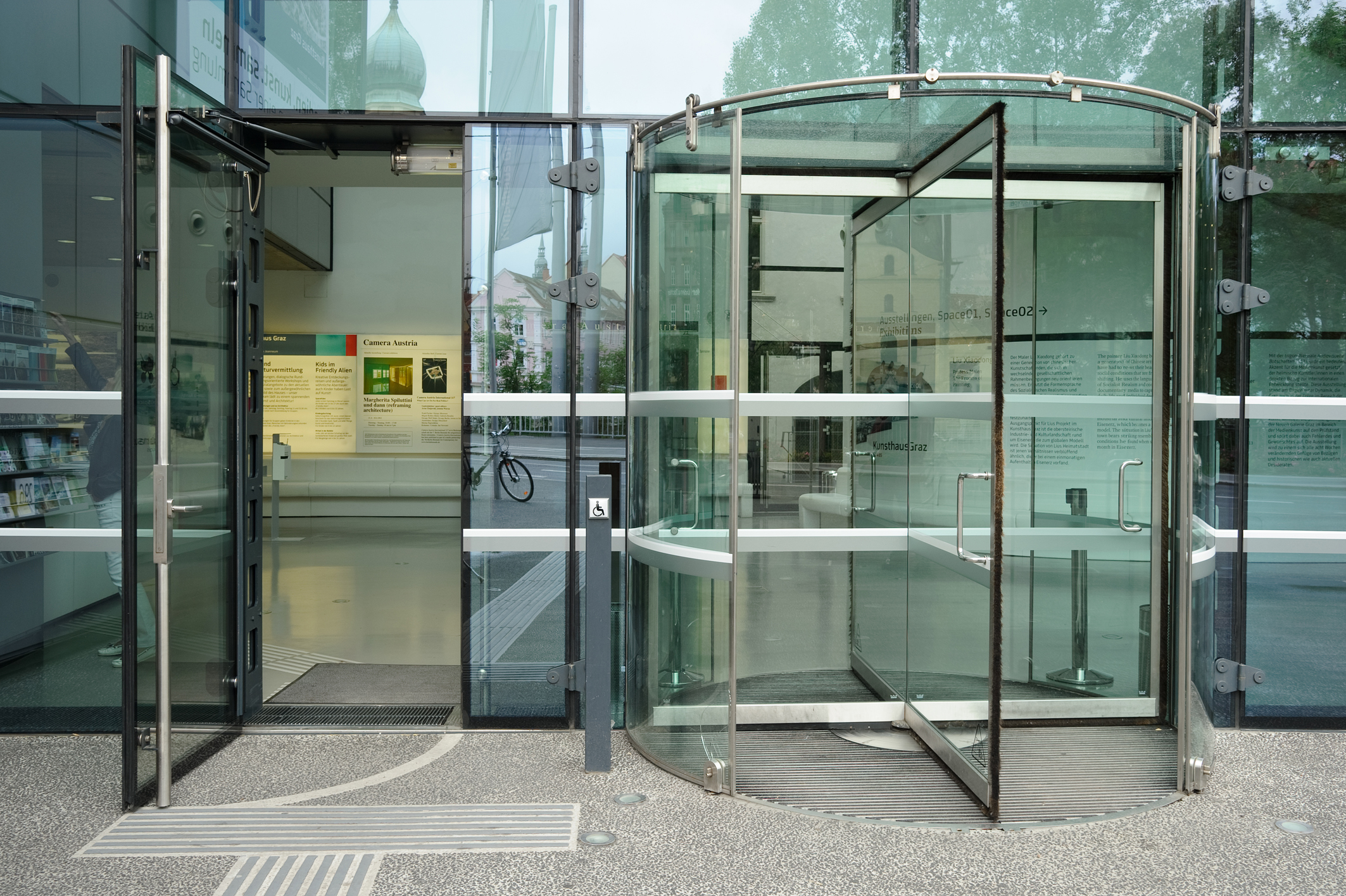
photo credit: N. Lackner | Universalmuseum Joanneum
Access
In Germany there are rules and regulations for everything. For your event they indicate how long, wide and steep a ramp should be, so that people with a wheelchair, wheeled walker or baby carriage can easily manage the ramp. It is better for the community spirit at your event if all your guests can enter the location in the same area. That is why a stepless entrance into the building is very important. It is also useful to test the elevators: Are they wide enough? Are the floors announced? Can guests geht from the elevator to the next floor without steps?
photo credit: N. Lackner | Universalmuseum Joanneum
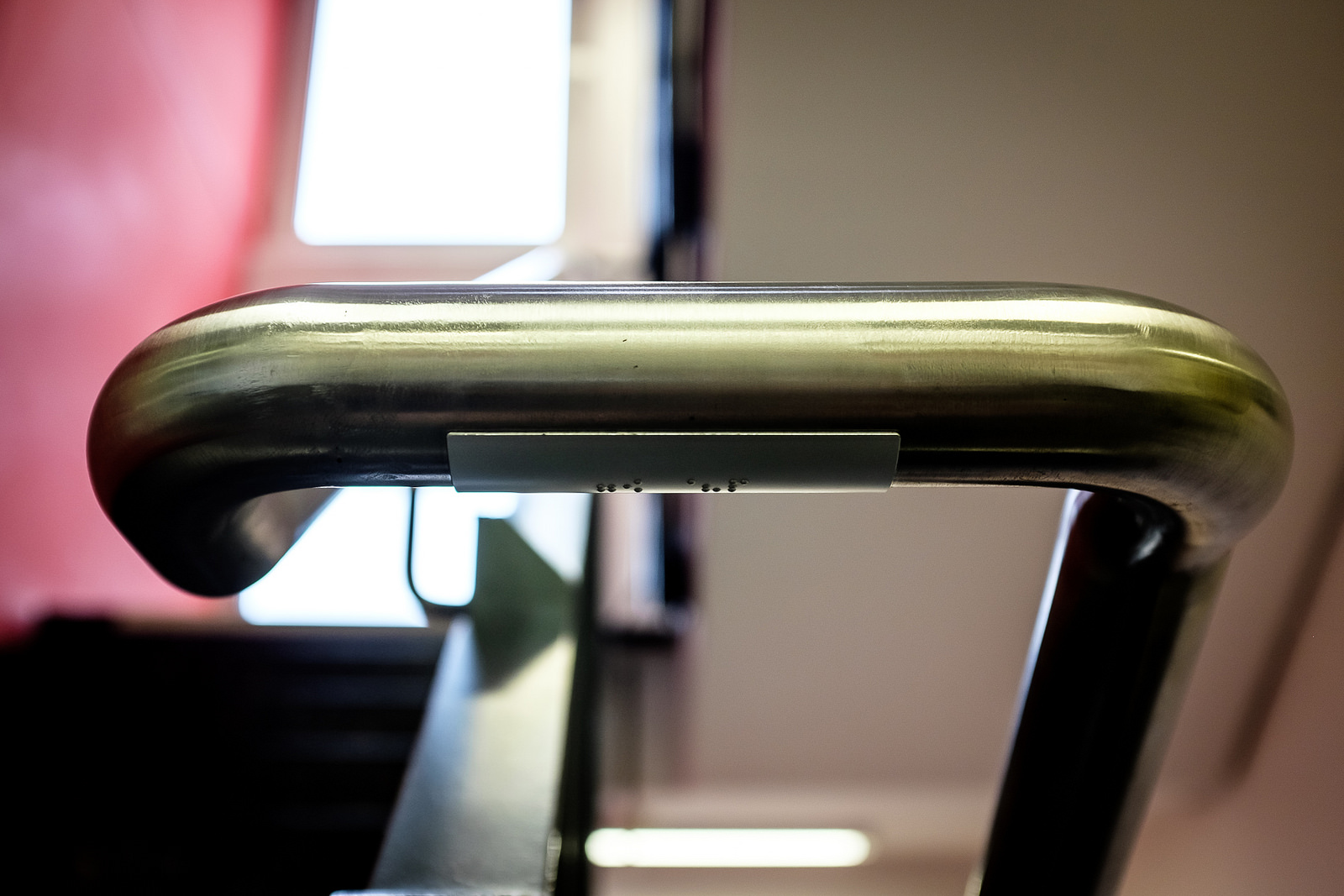
openTransfer CAMP 2015 #Inklusion in the City of Dortmund
photo credit: Andi Weiland | www.opentransfer.de (CC by nc)
A few figures
- Ramp: optimally its incline should not be greater than 6% and it should be 120 cm wide, if possible.
- Elevators are a must when events take place in various stories of a building. Optimally they should be 110-140 cm wide.
- Doors should be wide as wide as possible (optimally 90cm) and easy to open.
- Steps should have a non-slip surface and a railing for holding on to. Optimally the railing is at a height of 85-90 cm and runs beyond the first and the last step. The outer edges of steps can be recognized more easily if they are marked with a color or a tactile strip.
openTransfer CAMP 2015 #Inklusion in the City of Dortmund
photo credit: Andi Weiland | www.opentransfer.de (CC by nc)
The Layout and the Furnishing
It is advisable to have the following rooms or spaces at the location if possible: a main room with a stage, a quiet / relaxation room, an eating area, toilets. A supervised play area makes it easier for guests to combine their attendance at your event with their family life. Signs with large lettering and pictograms are important to help people find their way. In addition, guiding strips on the ground which can be felt by blind people with a white cane are very helpful.
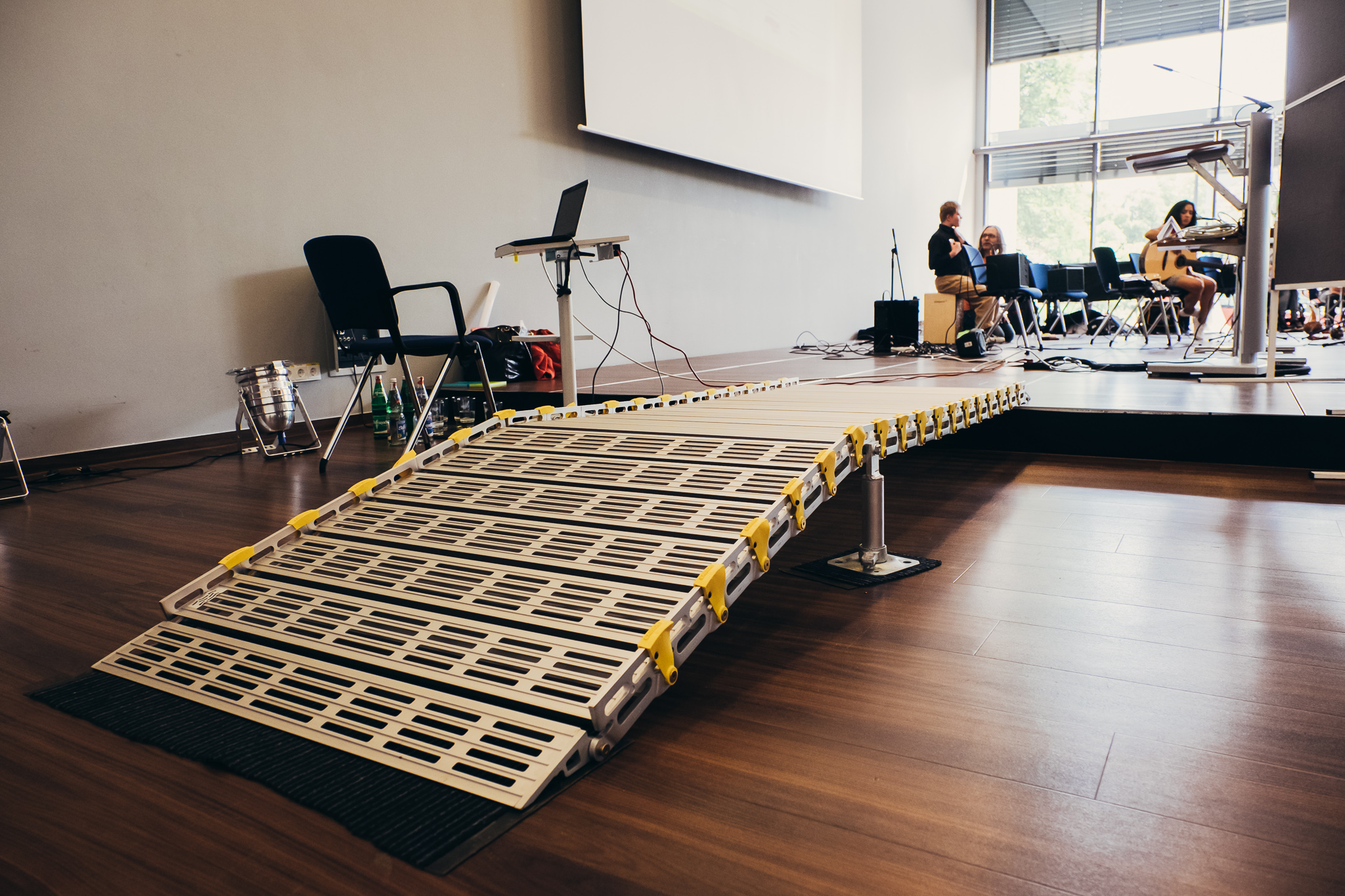
Conference “AllerArt Inklusion” hosted by the Bundesvereinigung Kulturelle Kinder- und Jugendbildung
photo credit: Andi Weiland | BKJ
“Everyone takes part”
The main room and stage should be easy to reach for everybody, optimally without steps, with smooth floors (no carpet), tactile strips on the ground and easy-to-open doors. There are different accessibility requirements for the stage and the audience. The stage should be set up according to the individual needs of the speakers. Speakers who use a wheelchair need a ramp to the stage and people of short stature need a lectern that can be adjusted in height. In the audience guests who use a wheelchair do not want to sit alone but rather with whomever they came with or with the other guests. Having extra space for wheelchair users next to the aisles or in front of the first row of chairs is a good solution. Make sure that there is enough space between the stage and the first row for wheelchair users to maneuver. People with hearing impairments should be seated up front so that they have a good view of the sign language interpreters.
Conference “AllerArt Inklusion” hosted by the Bundesvereinigung Kulturelle Kinder- und Jugendbildung
photo credit: Andi Weiland | BKJ
3 Additional Tips:
- Do not use an electric platform lift for the stage, it is too slow and noisy.
- At concerts and other events where the audience stands, provide an additional podium so that wheelchair users can see the stage.
- Do not use blinding or flickering lights. Optimally, the light should be dimmable.
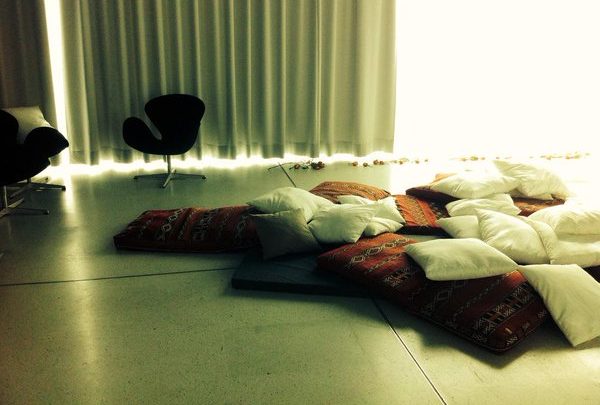
reCampaign 2015
photo credit: Lilian Masuhr
“Everybody needs a break”
A quiet room for getting together in smaller groups is very helpful (especially for people with hearing impairments). To give people a chance to rest, small rooms which can be locked and that have places to sit or lie down are recommended. A cot or daybed that can be altered in height is particularly useful.
reCampaign 2015
photo credit: Lilian Masuhr
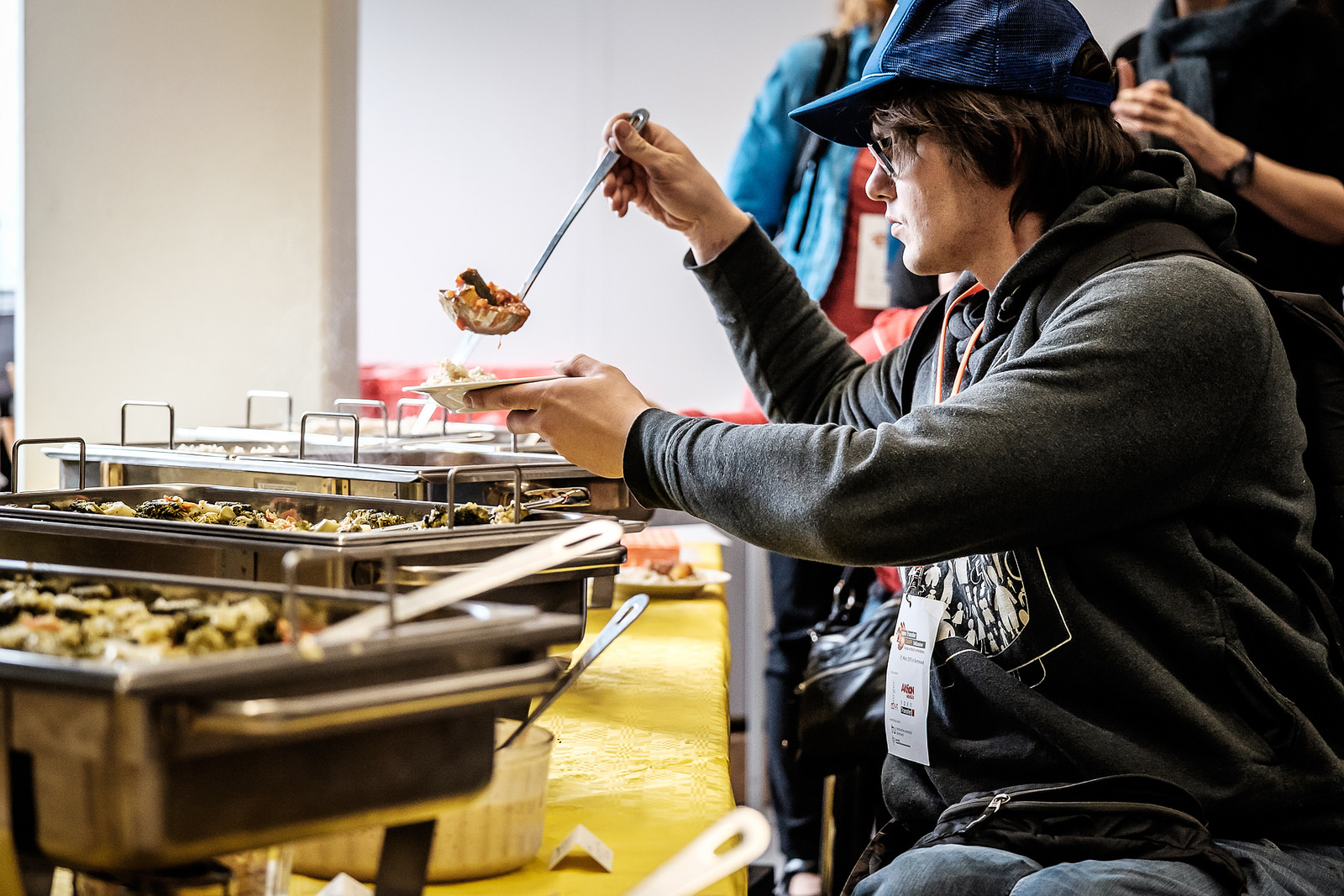
openTransfer CAMP 2015 #Inklusion in the City of Dortmund
photo credit: Andi Weiland | www.opentransfer.de (CC by nc)
“Everybody snacks sometimes”
There should be no barriers (such as high counters or out-of-reach food display cases) between the food distribution and the guests. A lowered counter at the cash register for wheelchair users and someone to assist blind guests at the serving area are very helpful. The ingredients of the food and drink should be listed, especially allergenic ingredients such as gluten, lactose and nuts. Vegetarian and pork-free alternatives are important, as well as straws for people with muscle disorders. Everyone appreciates the possibility to take a seat while eating and people of a small stature need lower chairs. Very helpful are spots without chairs at tables for wheelchair users and sufficient space between the tables to pass through.
openTransfer CAMP 2015 #Inklusion in the City of Dortmund
photo credit: Andi Weiland | www.opentransfer.de (CC by nc)
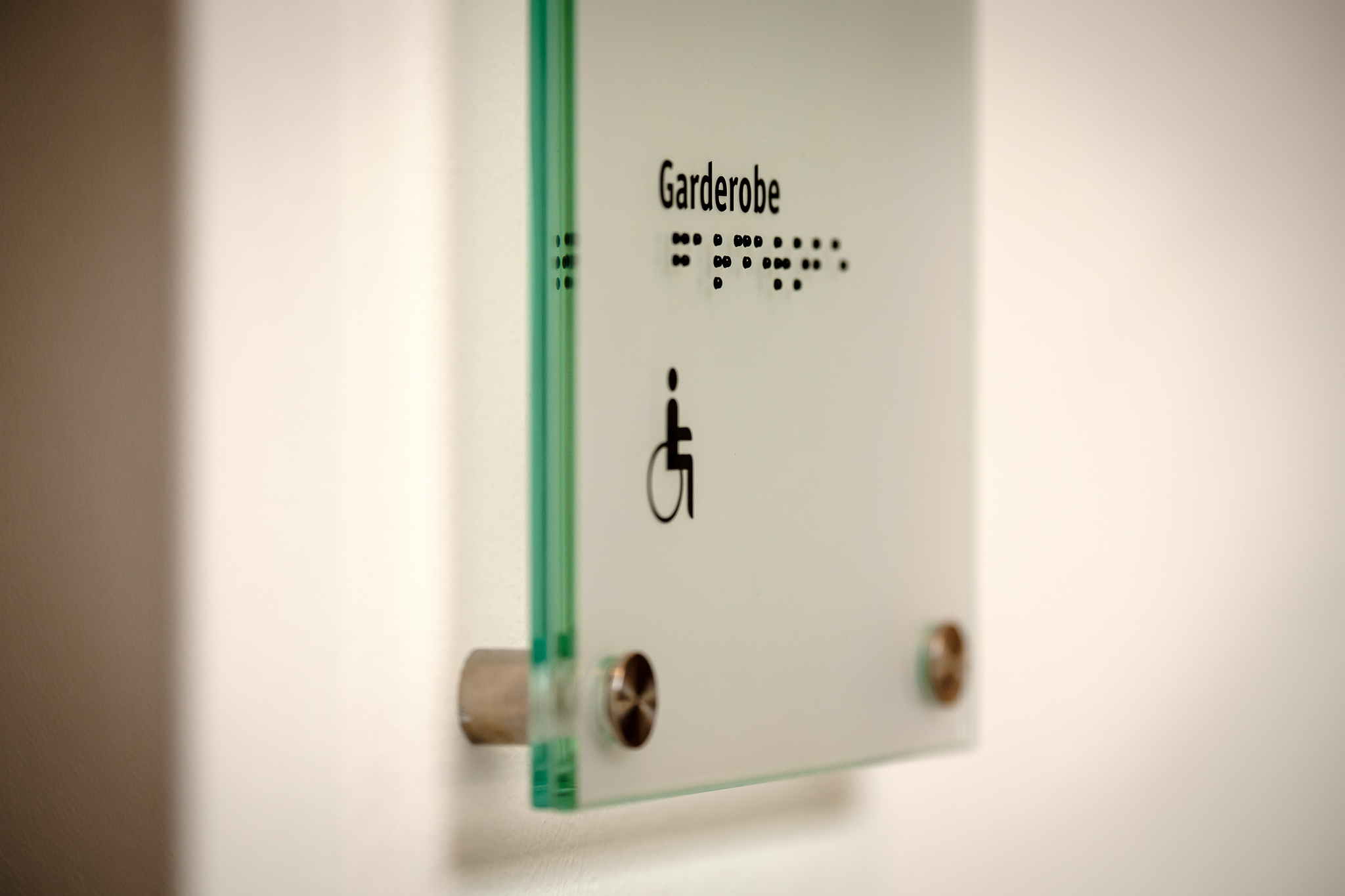
Conference “AllerArt Inklusion” hosted by the Bundesvereinigung Kulturelle Kinder- und Jugendbildung
photo credit: Andi Weiland | BKJ
“Everyone needs to answer nature’s call”
It is best if the doors to the restroom are easy to open. If the toilet is locked, a key must be available, for instance at the information desk. There should be someone readily available who can show blind guests the way to the restroom. In order to warrant the guests’ safety, an alarm button or emergency pull chord are important. Make sure that the wheelchair accessible toilet provides enough room for guests in a wheelchair to be able to maneuver freely. In addition, unisex restrooms are a good service for transgender people, as well as those who do not identify with a particular gender.
Conference “AllerArt Inklusion” hosted by the Bundesvereinigung Kulturelle Kinder- und Jugendbildung
photo credit: Andi Weiland | BKJ
Ramps:
It is good to have a mobile ramp for wheelchair users as well as stools for people of small stature on hand. Talk with the people who are setting up the stage. Often they use a ramp for the set-up and can leave it for you to use. If not, there is the wheelramp.de for low stages (maximum height of 30 cm). For higher stages, inquire about ramps at local stores, the Red Cross or suppliers such as Fischer und Timme in Hamburg.
In case of an emergency:
- First-aid kit, preferably at the information desk
- Fire alarm button, tactile and easy to see
- Fire extinguishers, also at wheelchair height (not higher than 1,1m)
- Escape route, also for wheelchair users (for instance wide paths without steps, firefighters’ elevators, wide stairs and an Evacuation Chair) and blind persons (tactile markings along the escape route)
- Accessible emergency information system that also alerts persons who are deaf
The neighborhood
If your speakers and guests are from out of town, then it is a great help if they are provided with information regarding local accommodations and gastronomy. It is easy to check in advance which hotels and restaurants are wheelchair accessible by using the online map wheelmap.org. Wheelmap is a useful tool for your guests who use a wheelchair to explore your event’s neighborhood. The public transportation provider in Berlin, BVG, offers assistance to people with a disability free of charge. You can check if the train station at your destination is accessible on the website of the German rail, Die Bahn.
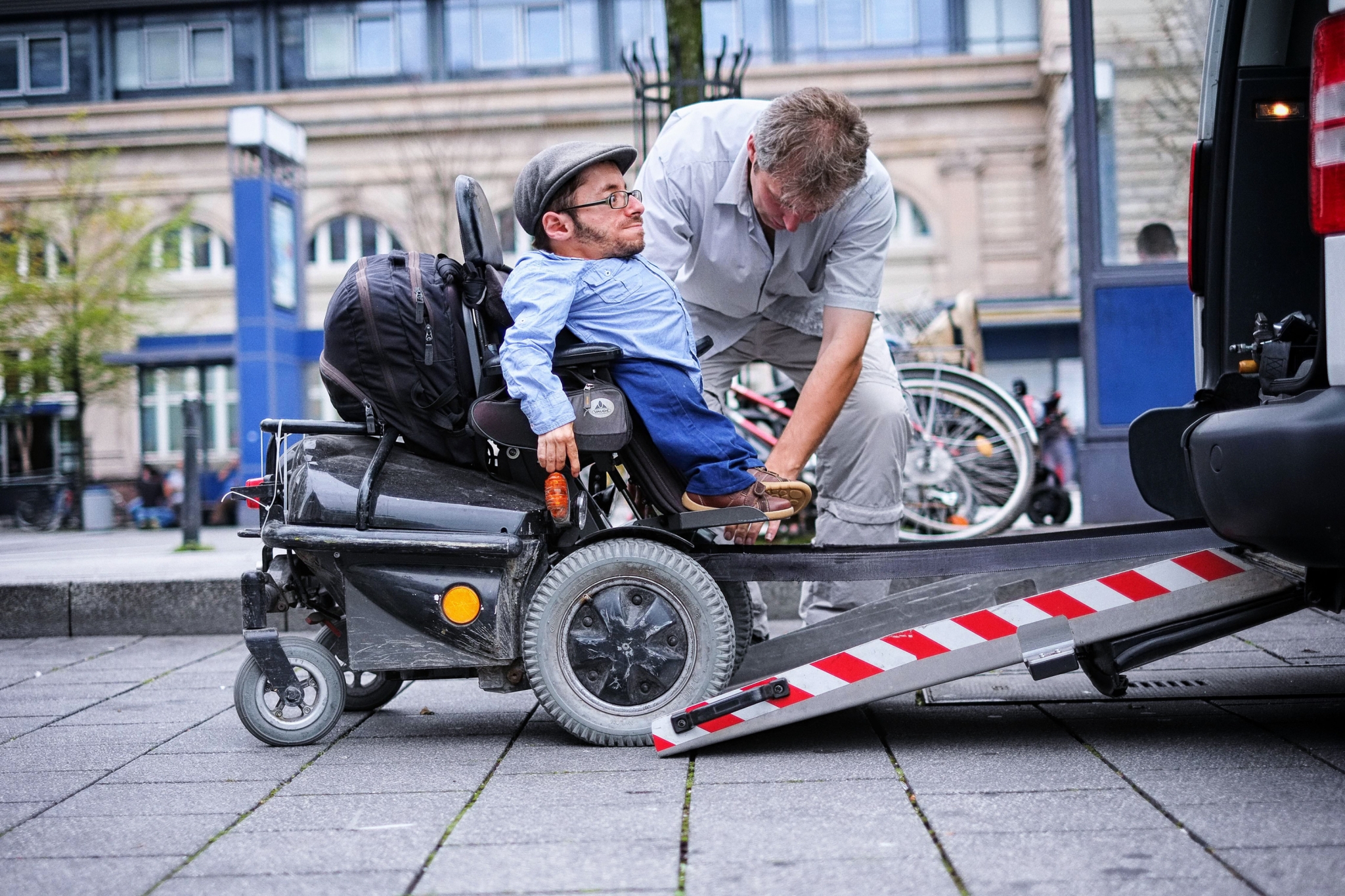
photo credit: Andi Weiland | Sozialhelden e.V.
Wheelchair taxis
Most cities do not yet have wheelchair accessible taxis. There, one needs to use special transport services such as the one provided by Die Johanniter. But in some places there are already a few wheelchair taxi services.
photo credit: Andi Weiland | Sozialhelden e.V.
wheelmap.org – The online map for wheelchair accessible places
travelable.info – Information about accessible destinations in german cities
news.wheelmap.org – Tips for visiting Berlin in a wheelchair
